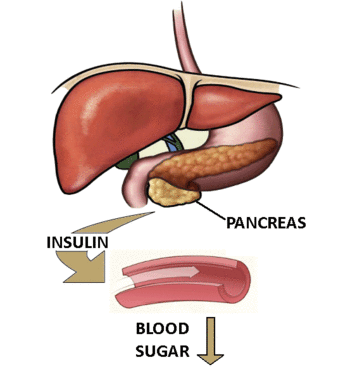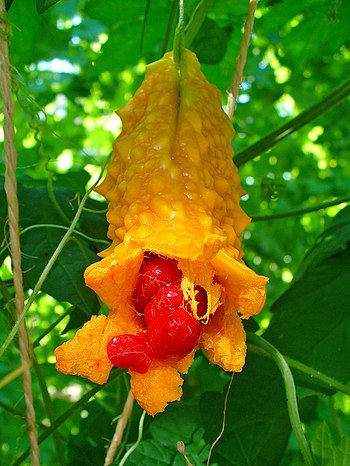 |
| Congenital diaphragmatic hernia (Photo credit: Wikipedia) |
Introduction
A hernia is an abnormal protrusion of internal organs through an abnormal opening in the wall of the cavity. A combination of increased pressure inside the body with weakness in the wall is responsible for this condition. In this condition, internal organs or parts of organs are protruded out forming a swelling which will increase the size with coughing and lifting the weight, and while passing stool and urine. In lying down position the swelling goes inside except in strangulated an irreducible hernia.
Causes:-
1, Weakness in the body wall:--
a) Congenital weakness.
b) Acquired weakness due to injuries, wasting of muscles, suppurative lesions in the wall and presence of weak natural openings, obesity, lack of exercise, repeated pregnancy.
c) Surgical operation with improper suturing or sepsis of operated site.
2) Increased pressure inside the body.
a) Chronic constipation.
b) A recurrent cough.
c) Weightlifting.
d) Stricture of the urethra.
Common sites for a hernia:--
A hernia can occur anywhere in the body. However, there are some common sites for a hernia. Due to the presence of hard bony covering chest wall is normally not affected. A hernia in the lower back is also rare due to spine and back muscles and tough ligaments and sheets. The common site for a hernia is an abdominal wall. Compared to other parts the abdominal wall is weak due to the presence of some natural orifices. There are some areas wherein the abdominal muscles are weaker and thin and all these factors make a chance for herniation. The common sites for a hernia are following.
Here the abdominal contents protrude through the inguinal canal (passage in the lower abdominal wall just above the inguinal ligament.It is seen on either side). This type is common in males. Initially, the swelling comes only while straining and goes back while lying down. Later the large portion of the intestine may come out which may not go back easily.
b) A femoral hernia:
This type of a hernia is more in females. Here the abdominal contents pass through the femoral canal which is seen just below the junction between the thigh and lower abdominal wall(Inside the femoral triangle). The contents pass downwards and come out through a saphenous opening in the thigh and form a swelling under the skin.
This is common in children. The umbilicus is the weaker part of the abdomen. The contents of the abdomen may protrude as a bulb like swelling while crying and defecating.
d) An incisional hernia:
These hernias are seen in operated sites. Due to improper suturing or sepsis, the operated site becomes weak resulting in a hernia.
Here the herniation occurs in the epigastrium. It is a rare type.
f) A lumbar hernia:
Here the hernia appears in the lumbar area on either side of the lumbar spine(in the lumbar triangle). This is also a rare type.
g) Obturator a hernia:
This is a rare type of hernia. Here the contents pass through obturator foramen in the pelvic bone.
Complications of a hernia:--
1) Strangulation:
If the hernial orifice is narrow the abdominal contents may not go back easily, and later the blood flow to the herniated tissues may be blocked due to constriction. This can cause the death of protruded intestine.
2) Intestinal obstruction:
This occurs when the whole portion of the intestine is protruded into the hernial sac. The narrow hernial orifice will block the passage of bowels.
3) Infection and peritonitis:
If there is strangulation with the death of a portion of intestine there will be spread of infection to the abdomen resulting in peritonitis.
Treatment of a hernia:--
Initial treatment: In the initial stages of a hernia the following steps may be useful
1) Use of hernia belt:
Special types of hernia belts are available for each type of a hernia. This will prevent the protrusion and will reduce pain.
2) Constipation, recurrent cough, urinary obstruction etc. should be treated.
3) Fat reduction will increase the strength of the abdominal wall.
4) Abdominal exercises to increase the muscle tone.
5) Take plenty of leafy vegetables, fruits and fibrous diet for easy bowel movements.
6) Try other systems like Homoeopathy, Herbal medicine and etc
If no relief by the above steps consults a general surgeon for surgical management.
Surgical treatment.
The following operations are done depending upon the type and nature of a hernia.
1) Herniotomy: In this operation, the contents of the hernial sac are pushed into the abdomen and neck of the sac is ligated with transfixion ligature and the sac is cut off.
2) Herniorrhaphy: Here along with herniotomy, the posterior wall is repaired.
3) Hernioplasty: This operation is done if herniotomy is not possible due to the wide neck of the sac. Here the repair is done with the help of non-absorbable materials like tantalum gauze, polypropylene mesh or stainless steel mesh.















